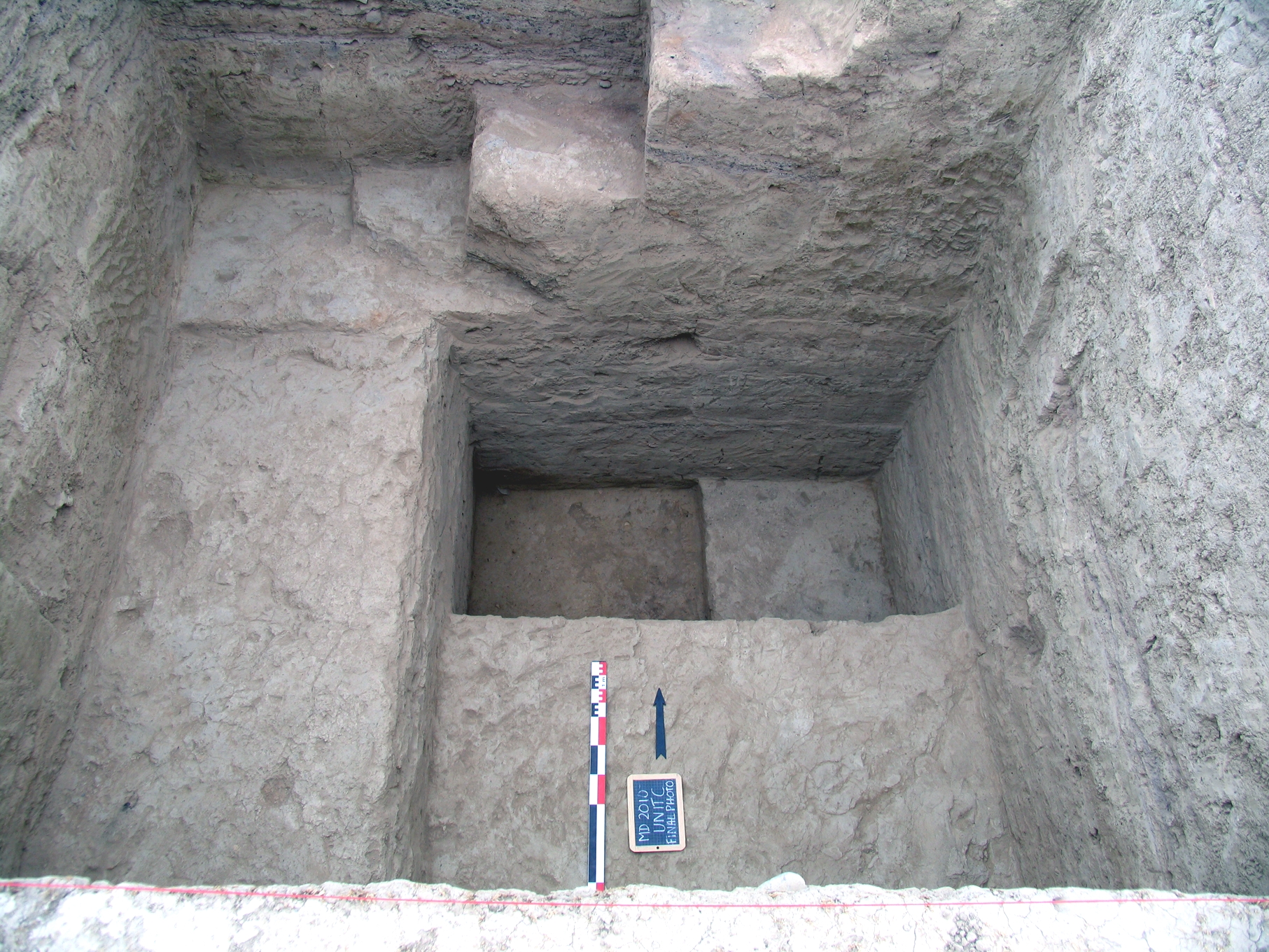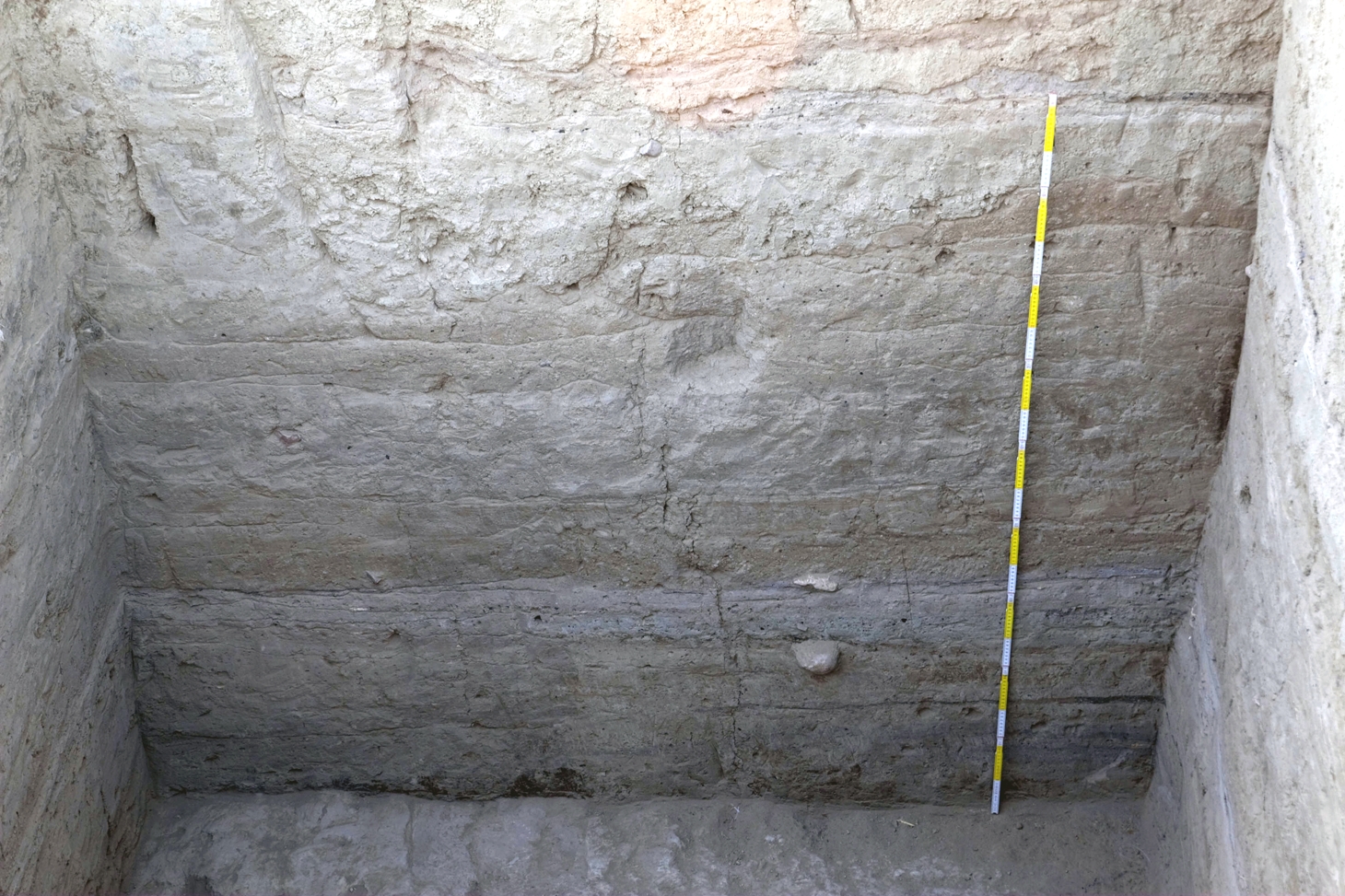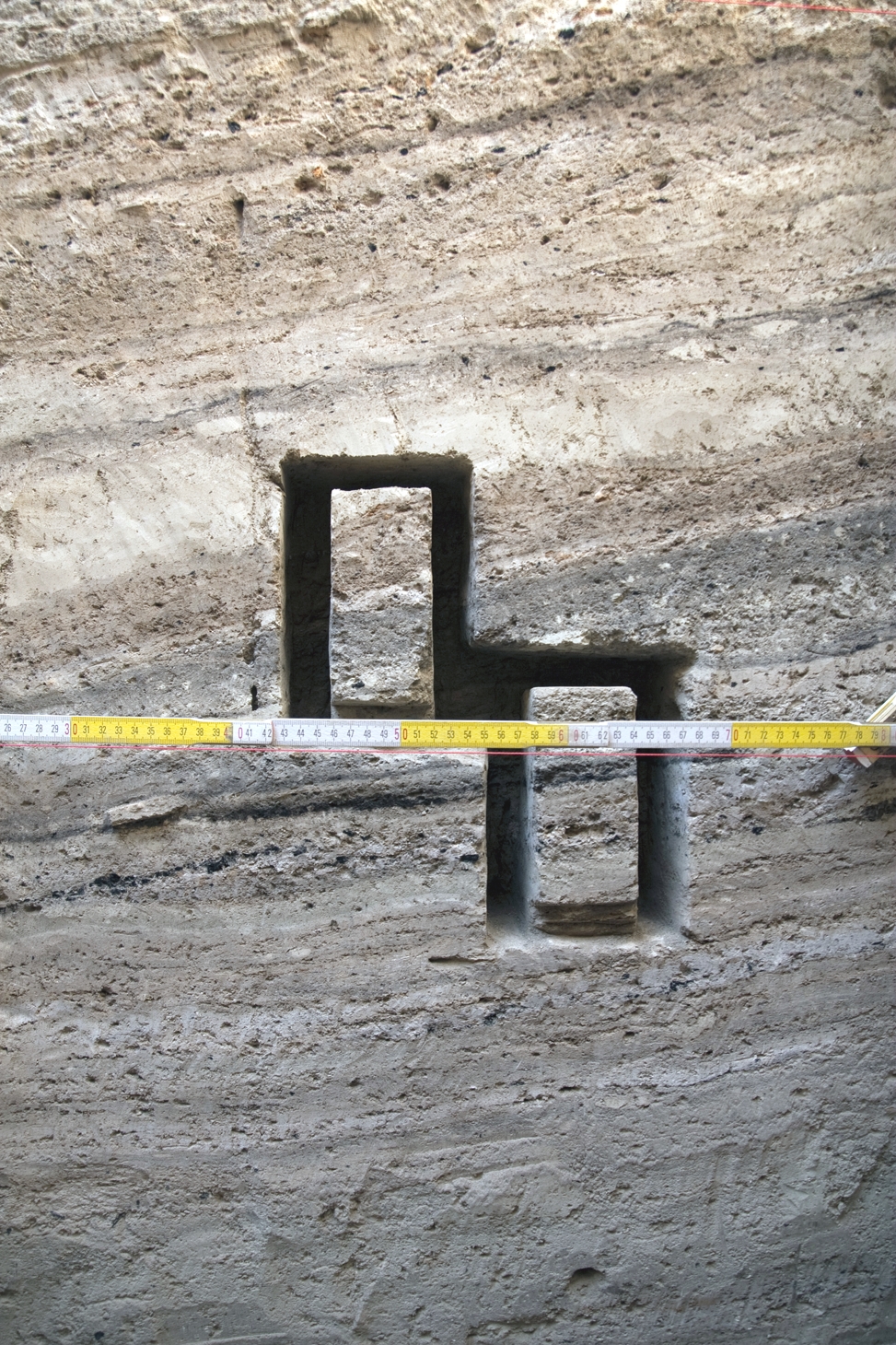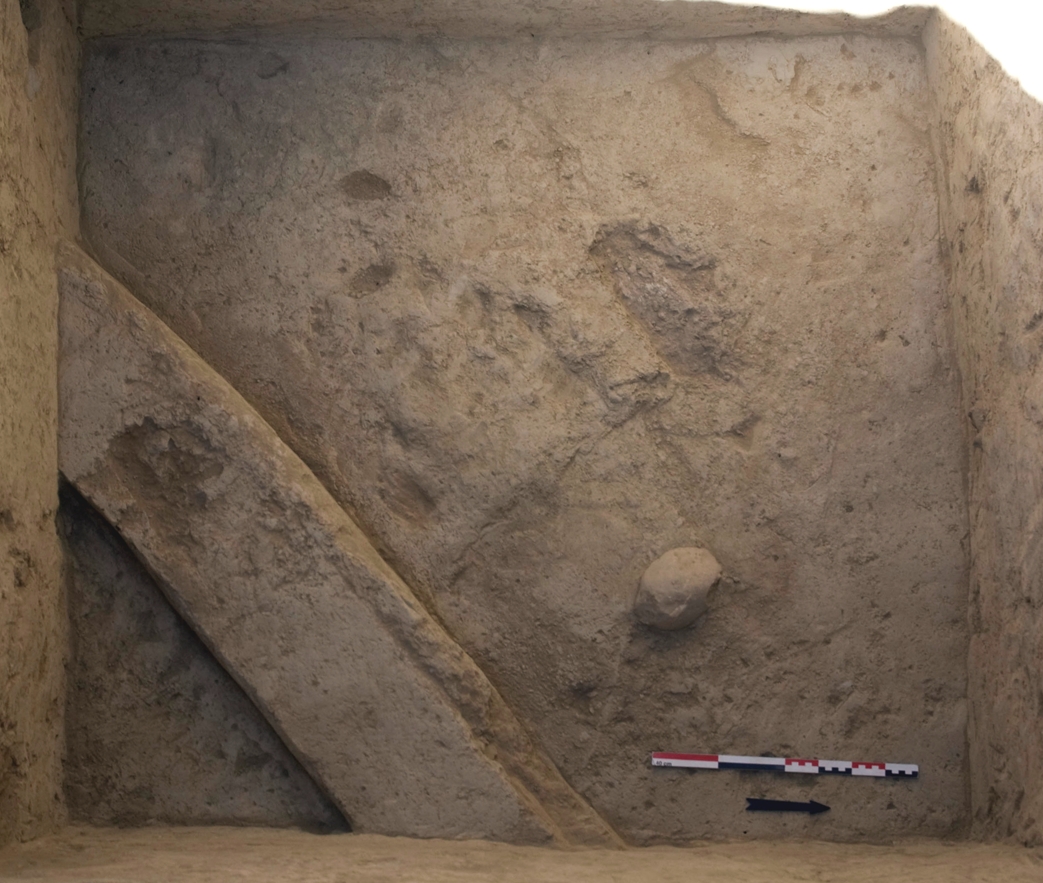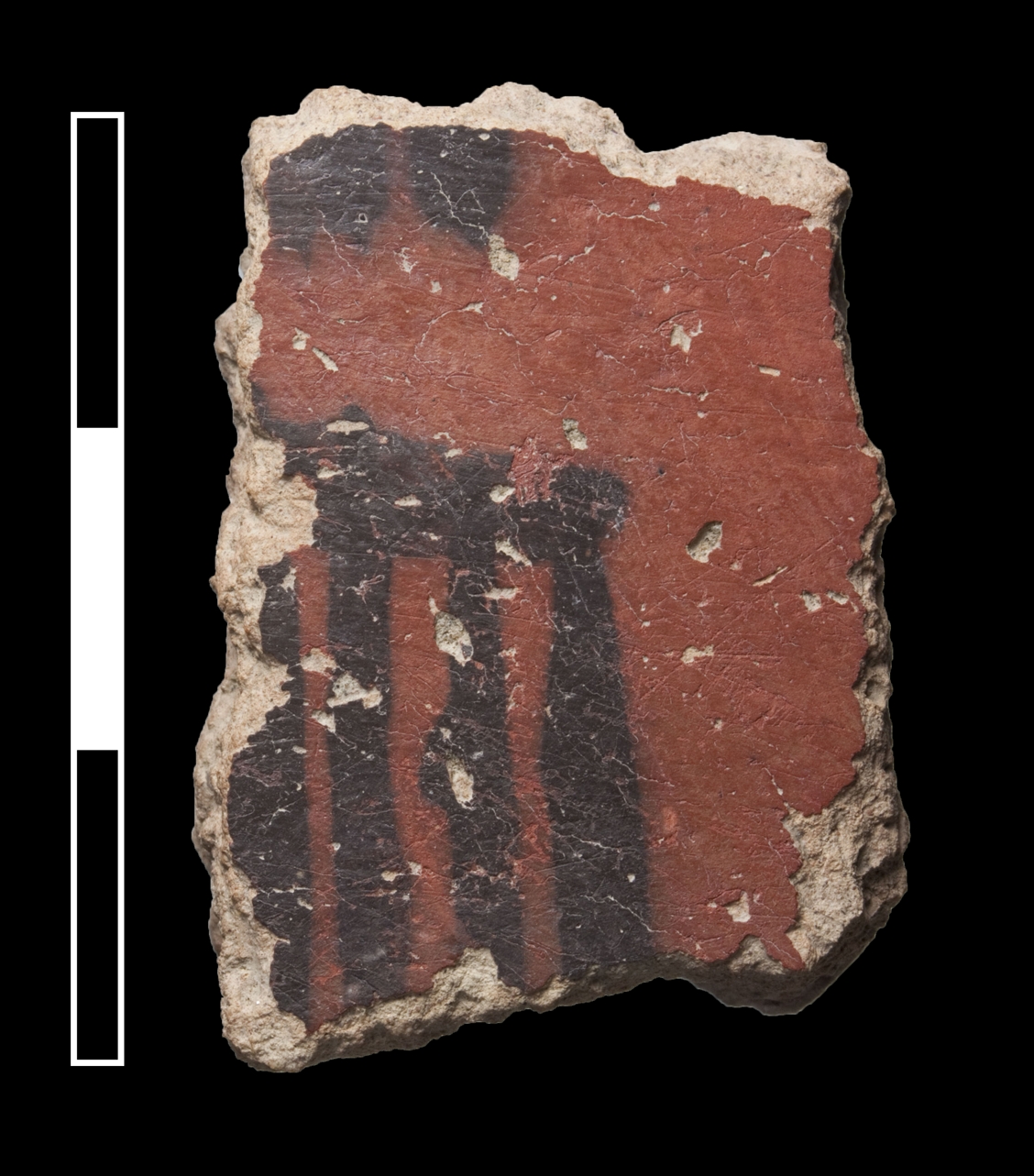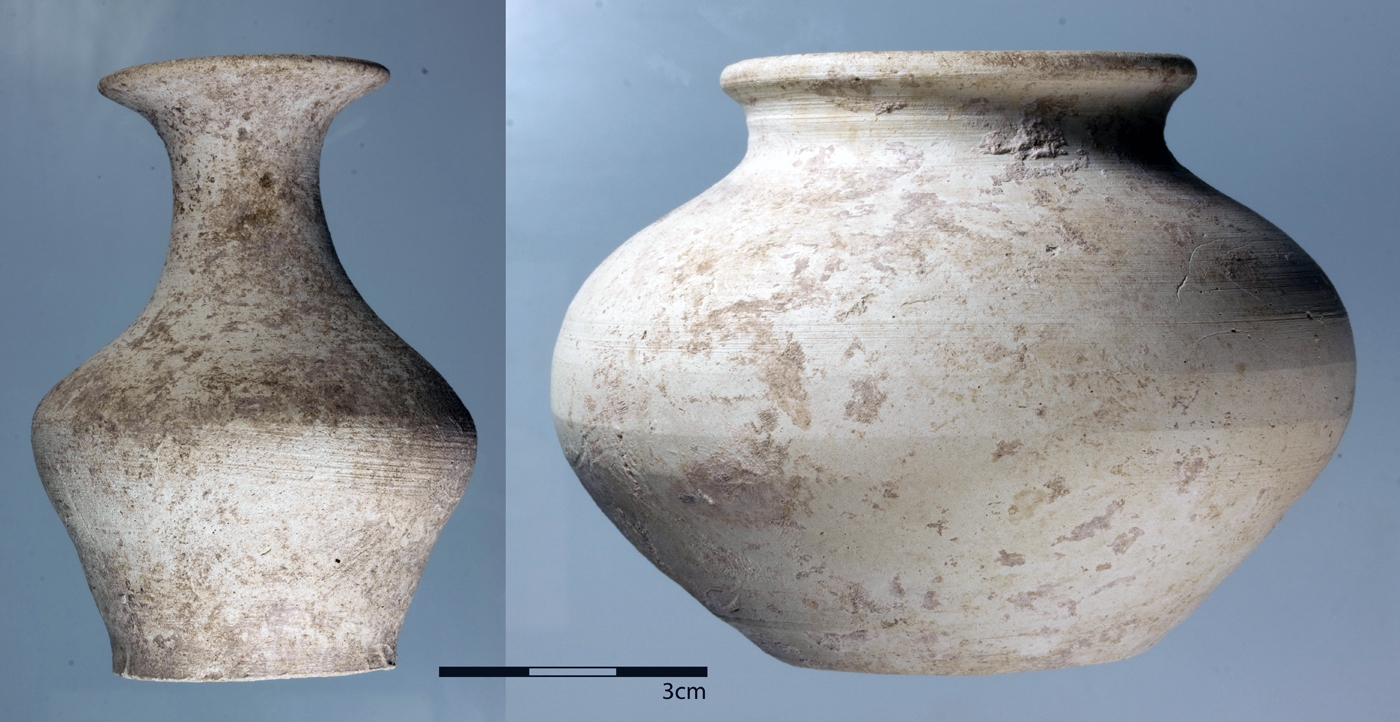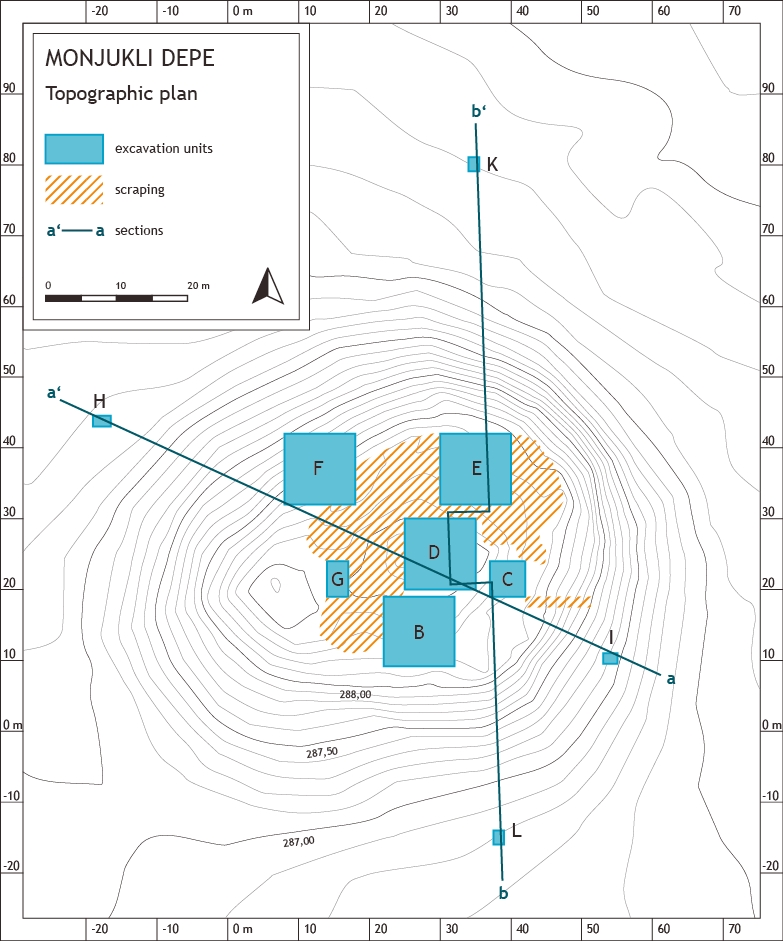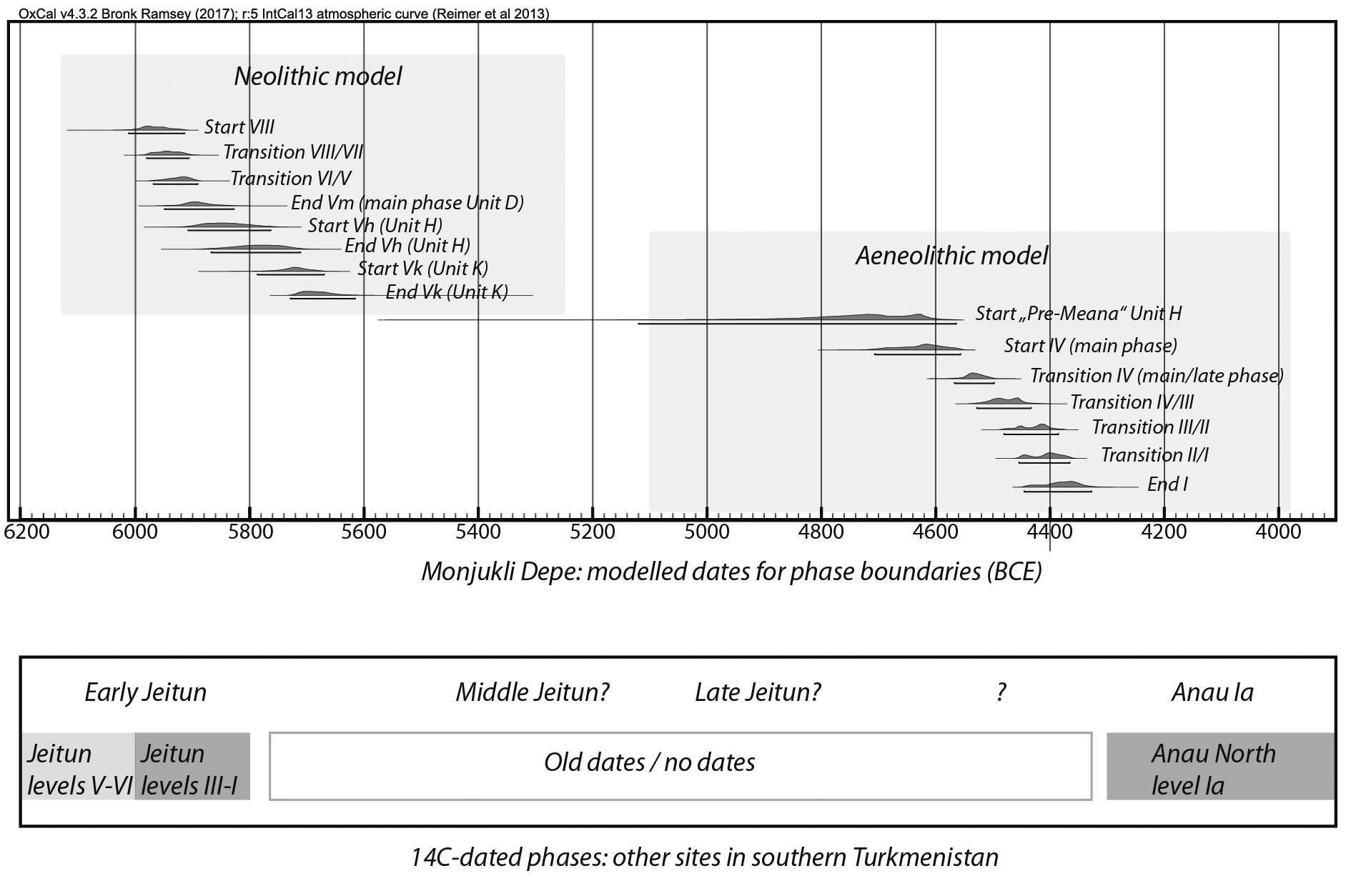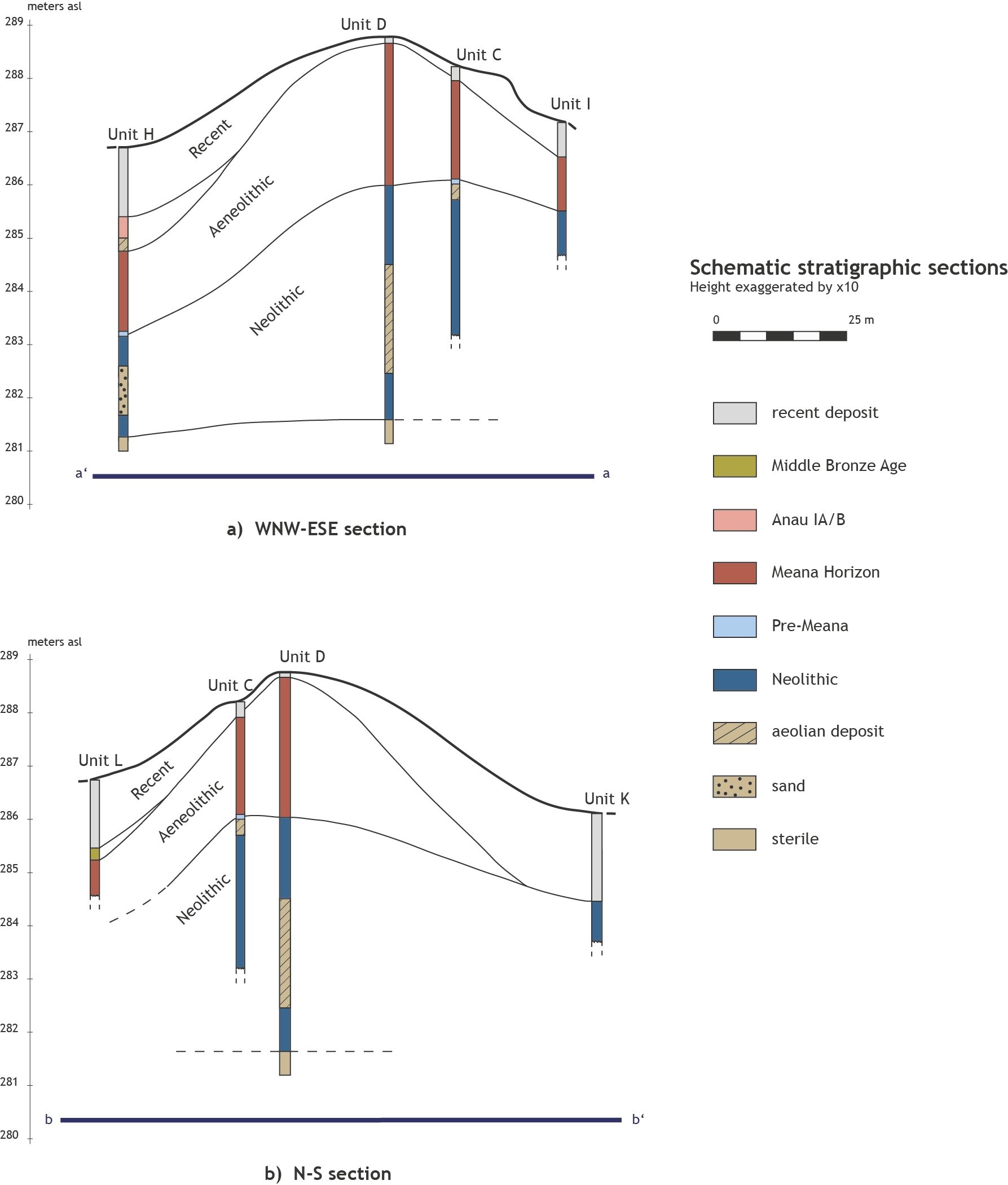Phases of Settlement in Monjukli Depe
Neolithic (ca. 6200-5600 cal BCE)
Settlement at Monjukli Depe is attested from the Late Neolithic, referred to in southern Turkmenistan as the Jeitun period. Neolithic levels were encountered ca. 2.5 – 3.5 m under the modern mound surface, and for that reason they have only been investigated in small areas. As a result, our picture of the Neolithic village remains quite fragmentary.
In the center of the mound, the Neolithic levels comprise a depth of approximately 4 m. We divided them into six strata, X-V.
The extent of the Neolithic settlement could only be estimated on the basis of the soundings we placed around the edge of the mound. The Neolithic village apparently lay slightly to the southeast of the later Aeneolithic settlement, as the remains of Neolithic architecture exposed in Unit I suggest. To the north of the mound, a mud wall and a surface date somewhat later than the Neolithic levels in the center, which may point to a shift of the settlement in the course of the Neolithic period. This is associated with repeated episodes of abandonment and resettlement, as revealed in the stratigraphic sequence.
According to our existing knowledge, the Neolithic levels are characterized primarily by thin surfaces that alternate with sterile aeolian deposits. These sequences point to ephemeral use phases that alternated with longer periods of abandonment. Only limited architectural remains were identified. They include a mud construction of at least 1 m width in Stratum VII (Unit D), against which bricky collapse, ashy layers, and use surfaces (Stratum VI) accumulated. The mud construction may have been a very wide wall or a platform. During that time, the area exposed in Unit C seems to have consisted of an outdoor space in which sporadic activities involving fire took place.
Although Berdiev attributed the Neolithic settlement at Monjukli Depe to the Middle and Late Jeitun and assumed that it gave way directly to the Aeneolithic Anau IA period, absolute dating now makes clear that the Neolithic occupation at the site dates rather to the early Jeitun period. Thereafter, Monjukli Depe was abandoned for many centuries.
Hiatus and Pre-Meana Phase (5600-4650 cal BCE)
The Neolithic and Aeneolithic settlements at Monjukli Depe are separated by some 800 years during which the village was left unsettled. This hiatus is attested in Unit C through a 75-cm deposit of nearly sterile sediment. In contrast, in Unit D the Aeneolithic levels lie directly over the Neolithic ones, pointing to the effects of erosion or perhaps to terracing in Aeneolithic times.
In deposits immediately below the Aeneolithic levels in Units C and H, some sherds of an otherwise unattested Neolithic Black on Red pottery were recovered. They may point to temporary, sporadic uses of the site during this hiatus period.
Meana Horizon (4650-4340 cal BCE)
The Aeneolithic settlement is the best documented part of the settlement sequence at Monjukli Depe. The uppermost stratum was exposed in the excavations of O. Berdiev. In our work, Strata I and II were extensively excavated and yield substantial information on settlement layout and Aeneolithic architecture.
The Meana Horizon settlement consisted of rectangular to squarish, single-room houses that were built very close to one another along paths as well as around large open areas that were also used as middens. Although the floors of houses were kept very clean while the houses were in use, outer areas and fills in abandoned or repurposed houses are characterized by massive ashy deposits that preserved large quantities of clay artifacts, including figurines, tokens, and spindle whorls.
Post-Meana use of the site
It remains unclear how and why the Aeneolithic settlement was abandoned. The last signs of construction are the poorly preserved walls of House 18, which was built atop Gate 1 next to the Eastern Midden. Following this building activity, there are only a few traces of a continuing or a subsequent use of the site. These include a pit on the western edge of the site that contained small, stylized figurines datable to the Anau Ib period. Material from this period was also recovered in a geomorphological trench, Unit M, excavated ca. 60 m to the north of the settlement. There, settlement traces lie under many meters of subsequent sedimentation.
Some of the burials found at Monjukli Depe may also have been interred after the abandonment of the settlement for living purposes. Among these are some of those published by Berdiev as well as three of the interments encountered in our excavations. One may imagine that the inhabitants of the village moved, for reasons unknown to us, to a nearby location but continued to use their former village as a cemetery. That the site was used as a burial place over a very long span of time is shown by a burial on the southeastern edge of the mound that dates to the Middle Bronze Age.
For further reading, see Heit in Pollock et al. (eds.) 2019; Heit in preparation; Bernbeck in Pollock et al. 2018.
